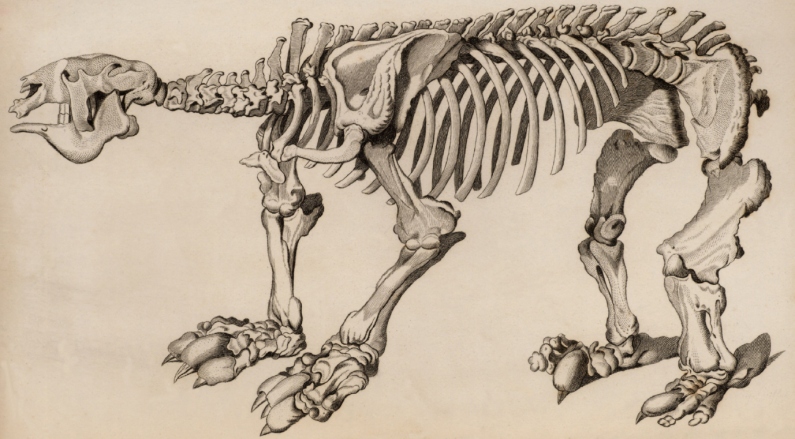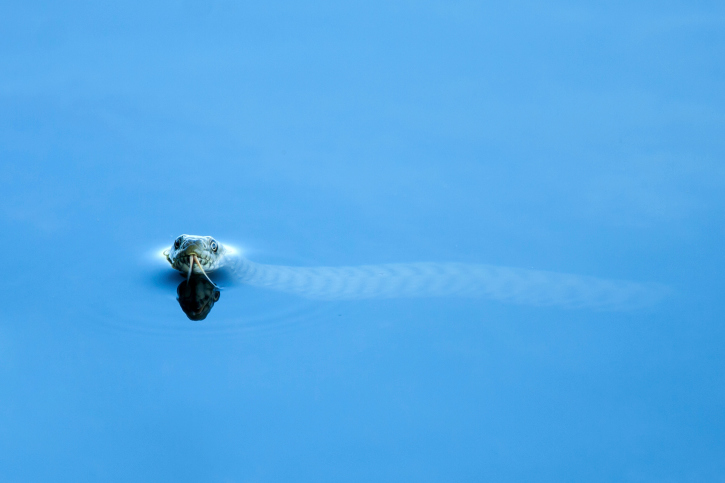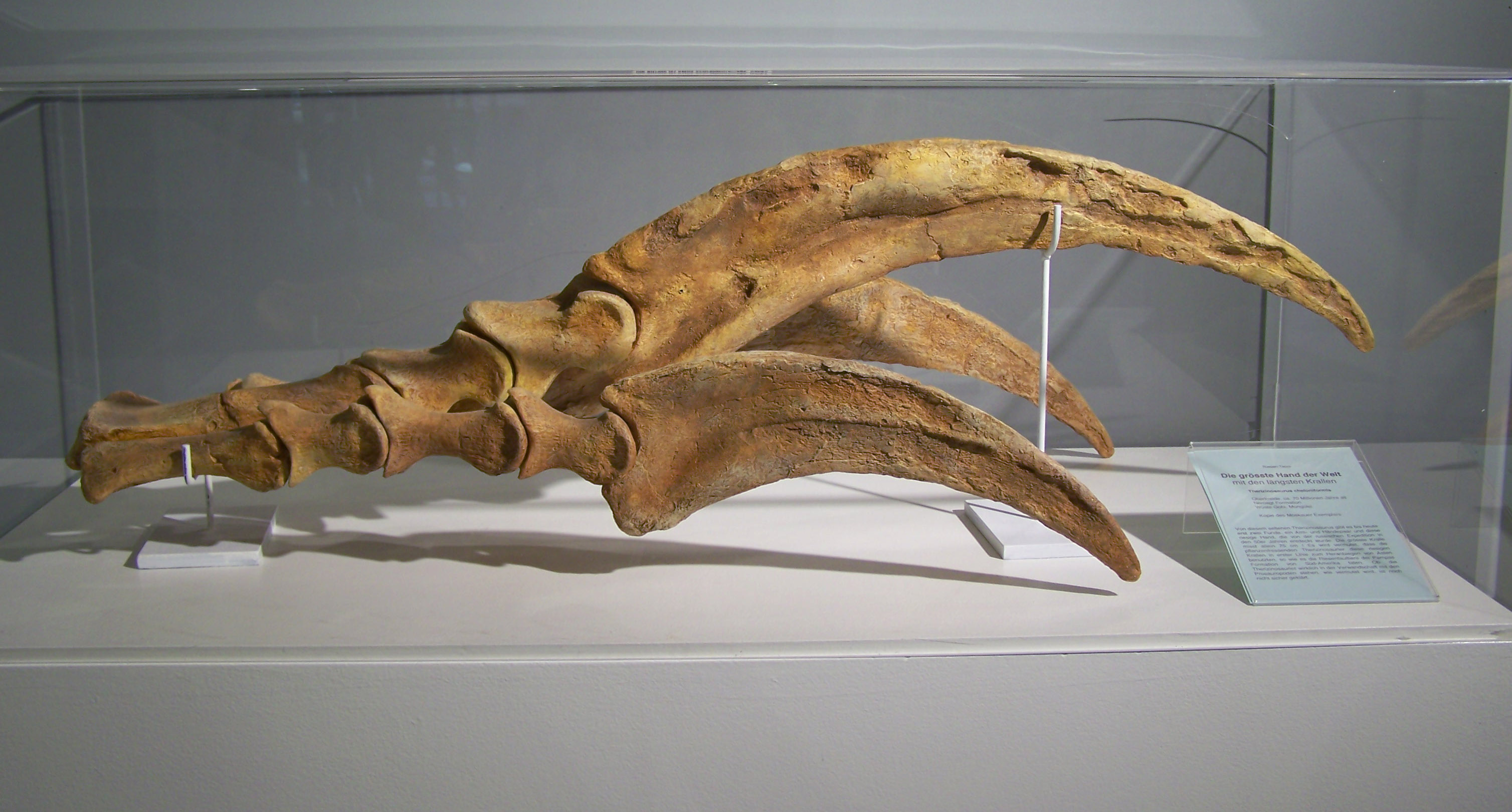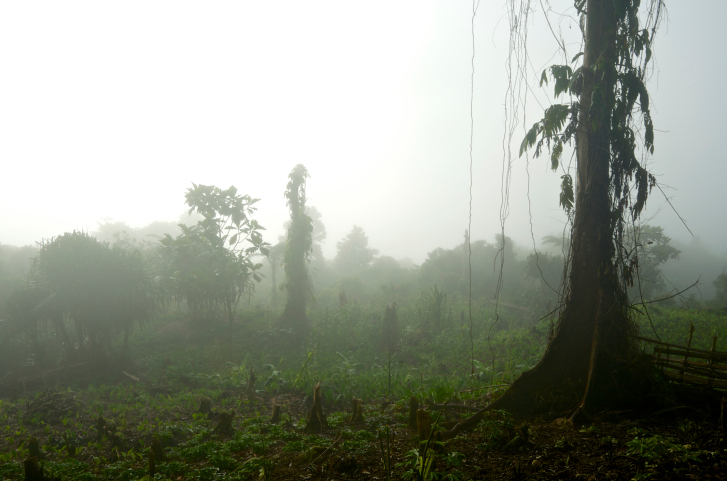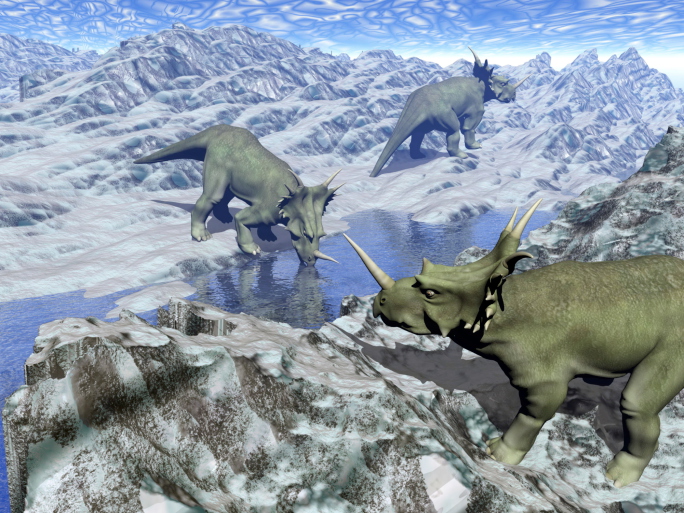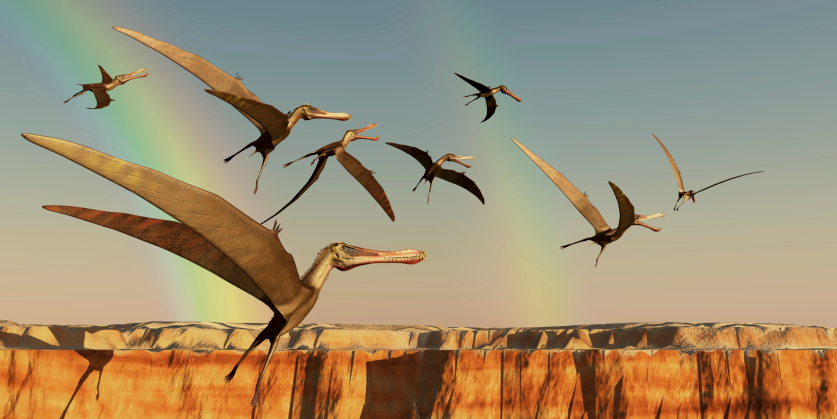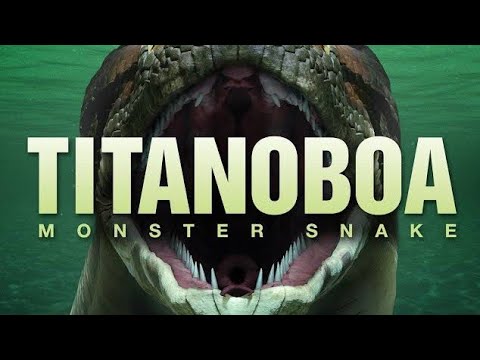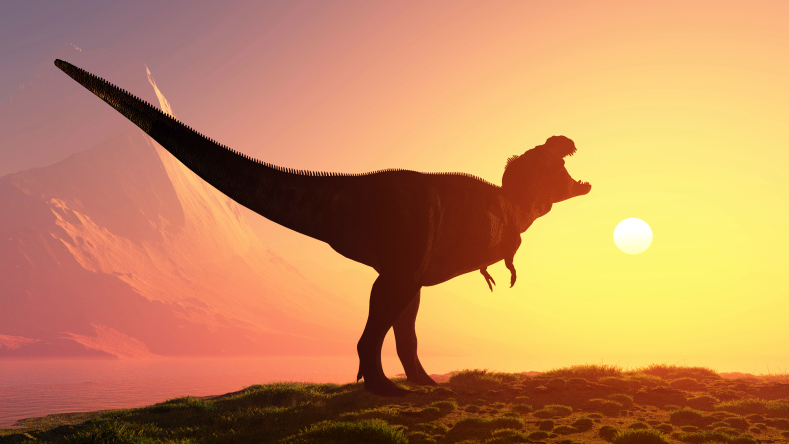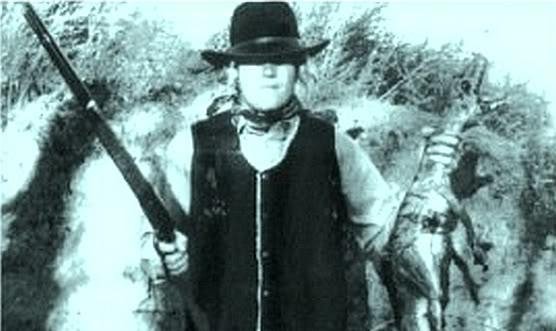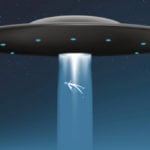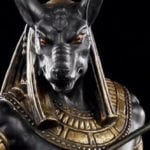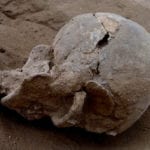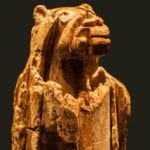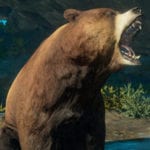10The Mapinguari
9The Lukwata
One of the more legendary entries on our list, the Lukwata is a Sudanese cryptid said to lurk within the swamps around Lake No. It is usually described as a great serpent up to 30 meters (100 ft) in length. According to a 1937 article by Captain W. Hichens: “its eyes flash deadly fire and . . . it feeds on men and large animals, which it seizes with monstrous bristling tentacles protruding from its muzzle.” Admittedly, this doesn’t sound much like any known prehistoric beast, but other accounts describe only a long neck with a small head, similar to a Saurian such as Apatosaurus or possibly Plesiosaurus. The Lukwata was also known in Uganda, where the Baganda, Wasoga, and Kavirondo tribes supposedly associated the creature with sleeping sickness and made burnt offerings of sheep and cattle to the beast.
8The Japanese Plesiosaur Carcass
In 1977, a Japanese fishing vessel was trawling for mackerel near New Zealand when its nets dragged something very peculiar up from the deep. The carcass, which nobody could positively identify, but which looked remarkably like a Plesiosaur, caused such a stir that the Japanese government issued a commemorative stamp depicting a Plesiosaurus skeleton that same year. While the media might be expected to play up the “surviving dinosaur” angle, a few scientists surprisingly did so as well—perhaps because they weren’t used to working with samples as badly decomposed as this one was. But it wasn’t long before other, better scientists pointed out that carcasses of this sort are discovered fairly regularly and usually turn out to be sharks or whales. Soon after the carcass became international news, tissue samples produced evidence that the creature was actually a dead basking shark. Decomposing basking shark carcasses lose the dorsal and caudal fins first, followed by most of the lower head area, making them resemble a “sea serpent” or Plesiosaur. Unfortunately, after a crew member took a few samples and measurements, the carcass was released back into the ocean to prevent it from spoiling the mackerel catch, making it impossible to definitively refute claims of prehistoric origin.
7The Queensland Tiger
The Queensland tiger is a catlike, German Shepherd–sized marsupial long rumored to live in Australia’s Queensland Rainforest. Known to the local Aborigines as the Yarri, it first came to the attention of white settlers in the 1870s. There were a flurry of sightings in the 1940s and ’50s before, in 1961, Craig Black claimed to have seen a female carrying a pouched cub in Ben Lomond National Park. Three years later, a traveler named Rilla Martin took a picture supposedly depicting the beast. Martin’s picture gained instant notoriety as “the Ozenkadnook tiger photo.” The jury is still out on whether the photo is authentic, although what looks like an artificial prop supporting the creature has been identified sticking out of the bushes. Fake photos or not, cryptozoologists have theorized that the “tiger” is a surviving species of Thylacoleo, a genus of carnivorous marsupials often called “marsupial lions.” Others believe that the Queensland tiger is a mainland version of Thylacine, the famous Tasmanian tiger, which is believed to have gone extinct in the 1930s.
6The Kaiaimunu
One of the strangest dinosaurs to have ever lived, Therizinosaurus looks like a bizarre mixture of horse and bird, with awkward, Edward Scissorhands–like claws sticking from its forelimbs and feathery protrusions coming from its elbows. Oh, and, at least according to a missionary group from Creation Ministries International, the creature is still around as part of a lost world of living prehistoric creatures on the small islands of West New Britain in Papua New Guinea. According to the group, nine natives of West New Britain have spotted the creature since the late 1990s. To make the story even more interesting, the group also claims that the islanders have seen a second creature, this one matching the description of a sauropod, possibly Apatosaurus, swimming between the islands. Of course, why a fundamentalist creationist group that believes the world is less than 6,000 years old would have an interest in proving dinosaurs still exist is anyone’s guess. But that isn’t the end of prehistoric sightings in New Guinea.
5The Gazeka
The Gazeka legend was originally started in 1910, when a widely syndicated newspaper account described explorer C. A. W. Monckton’s ascent of Mount Albert Edward in the west of British New Guinea. There, he supposedly came across the tracks of some enormous beast, which came to be known as “Monckton’s Gazeka.” According to the story, which does not appear in Monckton’s own memoirs, the explorer supposedly discovered the monster attacking a village of pygmies and opened fire on it. “The huge Gazeka at once turned upon him. As it reared upon its hind legs and pawed the air it looked to the hunter as big as a house, standing fully 25 feet high. Two of Monckton’s bullets seemed to take effect, as a stream of blood flowed freely from the animal’s shoulder, but before Monckton was able to reload the animal turned and fled. By that time it was too dark to follow him, and Monckton never had another opportunity to renew his pursuit.” While there are a number of holes in the story (New Guinea is not known for its pygmies), the article states that the supposed description of the creature reminded Dr. W. D. Matthew of the American Museum of Natural History of a Diprotodon, the Pleistocene epoch’s “Giant Wombat.” Diprotodon was the largest marsupial to ever live, growing up to 3 meters (10 ft) from nose to tail. Accompanying the article was a depiction of the pygmy race reportedly observed by the expedition, with an artist’s reconstruction of the giant footprints of the Gazeka. Creationists have claimed there are similarities between the reconstruction and Diprotodon‘s footprints. Unfortunately, they don’t match nearly as well as the creationists claim.
4Ngoubou
In 2000, cryptozoologists William J. Gibbons and David Woetzel were in Cameroon doing preliminary research for an expedition to search for the fabled Mokele-mbembe when local pygmies told them of yet another cryptid in the area. The creature, which supposedly fought elephants over territory despite being smaller in size, was described as a Ngoubou (“rhinoceros”). However, the pygmies insisted that the creature had an additional six horns around a frill, reminiscent of Styracosaurus, a Late Cretaceous beaked dinosaur similar to the better-known Triceratops. “Dutifully, we showed them the drawings of the Triceratops and again were rebuffed by the comment that while it looked like the Ngoubou it did not have nearly enough horns and that they were in the wrong place on the triceratops. I asked what they meant by that, the men told us that Ngoubou had six horns on the frill itself and one of them drew the configuration for me on a scrap of paper.” The difficulty with this theory is that Styracosaurus fossils have never been found outside of North America. Because some natives of the region describe the Ngoubou quite differently, and do not recall a frill, some cryptozoologists instead identify the creature with Stegosaurus or Kentrosaurus (which at least had the decency to come from Africa).
3Quetzalcoatlus Northropi
On September 25, 2001, a 19-year-old driving along Pennsylvania’s Route 119 reported what he described as “flags flapping in a thunderstorm” coming from above his car. When he looked up, he was astounded to see what looked like a bird with a 3–4.5 meter (10–15 ft) wingspan and a strange, elongated head flying above him. Over the next few months, two more witnesses would report seeing similar creatures in Greensville and Erie County, Pennsylvania. The reports were reminiscent of a string of sightings that took place in Texas in 1976 and 1982. In all cases, the creature described sounded remarkably similar to a Pterosaur. The sightings in Texas even occurred near to where the fossil of Quetzalcoatlus northropi, a large Pterosaur of the Late Cretaceous, was first discovered. Interestingly, these “Pterosaur” sightings seemed to occur close to each other in waves. That suggests that people were really seeing something—but what? One obvious candidate is the frigate bird, whose grey feathers can look like leathery skin from the right distance and whose wingspan can reach up to 2.5 meters (8 ft). The frigate bird hardly ever lands except to tend its young and can soar effortlessly over long distances. Over in Africa, the peoples of the Congo, Zambia, and a number of other regions speak of Kongamoto: “the Overturner of Boats.” It is described as featherless with smooth skin, a beak full of teeth, and a wingspan of 1–2 meters (4–7 ft). On the Gold Coast, British explorers in the 1920s heard tales of the Susabonsam, which grew to the height of a man and had thin, tenebrous wings like a bat. The truly large sightings of Kongamoto could be a surviving group of Quetzalcoatlus northropi, which, at the height of a giraffe, was the largest flying animal to have ever lived. Of course, they could also be condors, various storks, or other large birds seen in silhouette—or they might only be legends or outright hoaxes. But in 1988, Professor Roy Mackal led an expedition into the deserts of Namibia. He was investigating intriguing reports of a creature with a 9-meter (30 ft) wingspan seen gliding through the air. Eyewitness reports stated that it would appear at dusk, flying between two hills. Some even claimed that the winged monstrosity glowed in the dark. While the mission was unsuccessful, one expedition member claimed to have seen it from a distance, describing it as “a giant glider shape, black with white markings.”
2Titanoboa Cerrejonensis
Titanoboa cerrejonensis was a prehistoric snake measuring up to 13 meters (42 ft), making it the largest snake known to science. Its fossil remains were found in northeastern Colombia and Jason Head of the University of Toronto says that he “just about screamed” when he saw the size of the fossils. We would, too. Opinion is divided as to whether or not such reports, if they are to be believed, represent cases of giant anacondas (meaning that science has yet to document the true upper limits of their size), an entirely new species of snake, or a prehistoric survival of Titanoboa or Gigantophis garstini. In 2009, a man from Northern Ireland named Mark Warner and his son Greg traveled to the region to try to capture evidence of the creature, assembling a team to carry out aerial surveys of selected locations. After 12 days in the jungle, hazardous weather conditions, hundreds of still photographs, and hours of video, the two men captured a photo of what they claimed to be a gigantic snake, about 40 meters (131 ft) long and almost 2 meters (6 ft) wide. Now, there has been some debate about just how large the anaconda can grow, but 40 meters is an extraordinary claim requiring a lot more evidence than a rather unclear aerial photograph. Warner and his son have planned additional expeditions to track down the monster and have recommended thermal imaging surveys of the region, but so far no new evidence has surfaced.
1The Burrunjor
You just knew the real king of the beasts had to be around here somewhere, and of course he’s from Australia, where everything seems to want to kill you anyway. The Australian Aboriginal peoples call it the Burrunjor, describing it as a bipedal giant reptile with strong legs and small, almost useless arms. Sound familiar? Throughout the 1950s, Australian cattle ranchers reported the bipedal tracks of some large creature that was attacking their livestock. One of the most dramatic sightings (which continue to this day) occurred near the McArthur River in 1957: “Cattle began to panic. The ranchers were perplexed, especially when one of their team ran screaming into a nearby river for relative safety . . . a loud grunting and snorting noise was heard. Witnesses viewed the silhouette of a tall monster fleeing into a nearby scrub land and daybreak revealed several mutilated cattle, some half eaten.” Other candidates for the Burrunjor are Allosaurus, Utahraptor, or nearly any other mid- to large-size Therapod. The remarkable thing about the Burrunjor tales is that, unlike most cryptid stories, reports of the Burrunjor stay remarkably consistent over time. But how could a population of creatures as large as the mighty Tyrannosaur feed themselves, aside from the occasional cow or crocodile? Maybe they ate all the other giant lizards that supposedly live in Australia.
+The Velociraptors Of The Old West
There have been many little-known sightings of smaller, Therapod-like lizards across the American West, collectively referred to as “River Dinos” or “River Lizards.” Examples include the “Mountain Boomer” of West Texas, said to be a bipedal lizard up to 2 meters (6.5 ft) tall, with greenish or brownish skin. In 1993, an investigator named Jimmy Ward claimed to have heard tales about, “a giant lizard that walked on its hind legs and whose voice sounded like thunder.” The Colorado “River Lizards” and “Oklahoma Raptors,” previously thought by some to be Dromaeosaurs (which, unfortunately for the eyewitnesses, are now known to be feathered dinosaurs), are more commonly sighted than the Boomer. In 1993, a woman came forward to claim she had seen tall gray (or green) lizard-like creatures no less than three times in her life. Her first encounter was in May 1935, when she witnessed five of the creatures near Pagosa Springs. There are several photographs in existence supposedly portraying living American dinosaurs. One of the best known, pictured above, shows a young man with a rifle holding what looks like the dead carcass of a baby dinosaur that he presumably shot. Another shows what looks like a Tyrannosaurus jutting out from just over a hill. Reports like this persist because, well, it’s the Wild West with dinosaurs! Who can’t get behind that? Lance is a science enthusiast, skeptic, freelance graphic designer and writer interested in topics on science and skepticism, history, atheism, religious issues and history, and a wealth of other subjects. You can look for him on Facebook until he starts a blog or something.
